Cleaning Procedure
- Clean the following components in solvent:
| • | Connecting rod bearings |
| • | Crankshaft oil passages |
| • | Crankshaft threaded holes |
Caution: Refer to Safety Glasses Caution in the Preface section.
- Dry the following components with compressed air:
| • | Connecting rod bearings |
| • | Crankshaft oil passages |
| • | Crankshaft threaded holes |
Visual Inspection

- Perform the following visual inspections:
| • | Inspect the crankshaft balancer bolt hole (1) for thread damage. |
| • | Inspect the crankshaft balancer mounting area (2) for damage. |
| • | Inspect the crankshaft sprocket pin hole (3) for damage. |
| • | Inspect the oil pump drive flats (4) for damage. |
| • | Inspect the crankshaft main journals (5) for damage. |
| • | Inspect the crankshaft connecting rod journals (6) for damage. |
| • | Inspect the crankshaft oil passages (7) for obstructions. |
| • | Inspect the crankshaft main bearing thrust wall surfaces (8) for
damage. |
| • | Inspect the crankshaft counterweights (9) for damage. |
| • | Inspect the crankshaft reluctor ring teeth (10) for damage. |
| • | Inspect the crankshaft rear main oil seal surface (11) for damage. |
| • | Inspect the crankshaft engine flywheel mounting surface (12) for
damage. |
| • | Inspect the crankshaft pilot hole (13) for damage. |
| • | Inspect the crankshaft engine flywheel bolt holes (14) for thread
damage. |
- Repair or replace the crankshaft as necessary.
Crankshaft Bearing Inspection
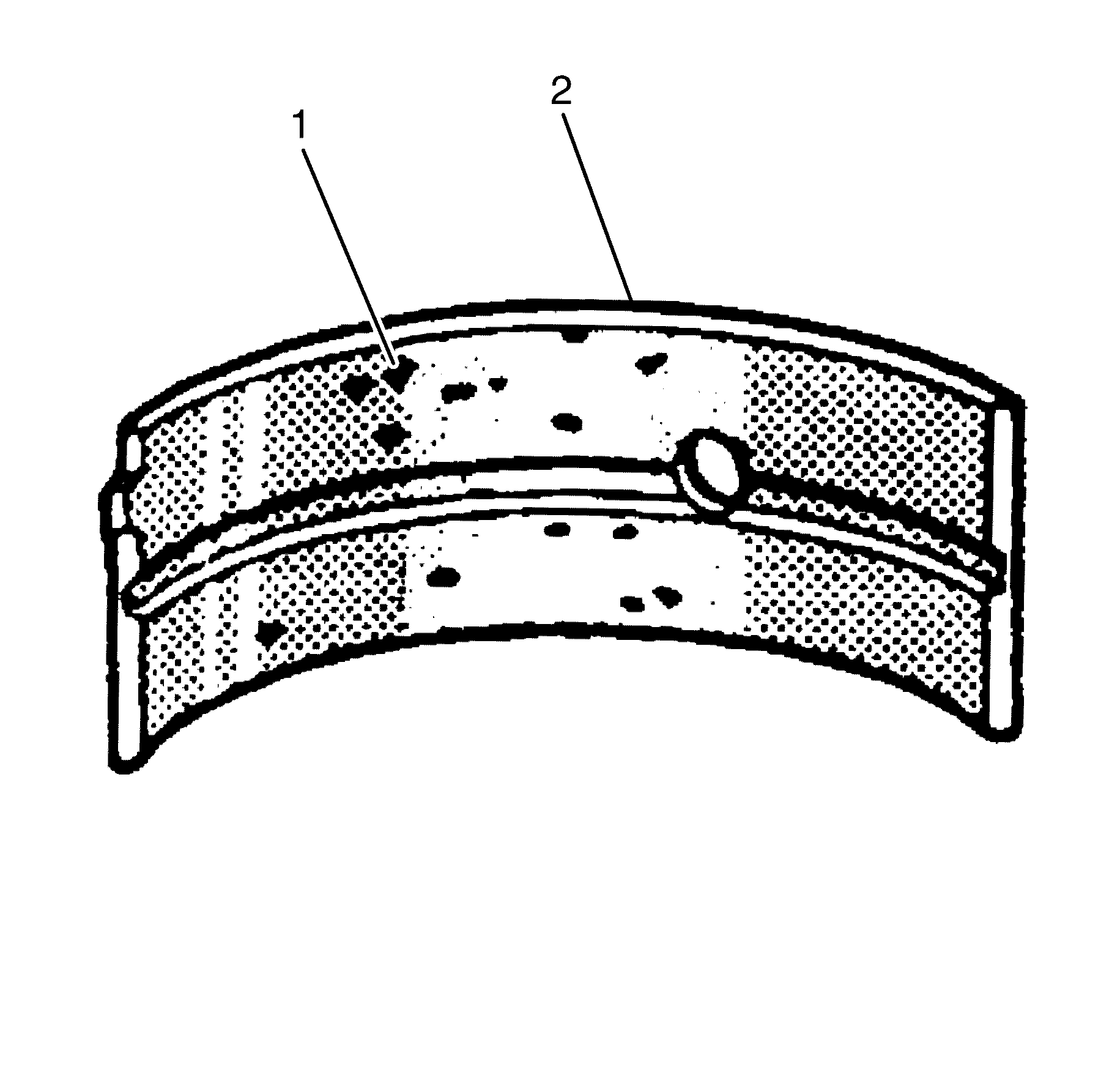
Important:
| • | All connecting rod and main journal bearings that have been used in a
running engine must be replaced. Never re-use the crankshaft or connecting rod bearings. |
| • | The following bearing wear conditions should be used to diagnose engine
operating conditions or root cause of a condition. |
- Inspect for fatigue indicated by craters or pockets (1). Flattened sections
on the bearing halves (2) also indicate fatigue.
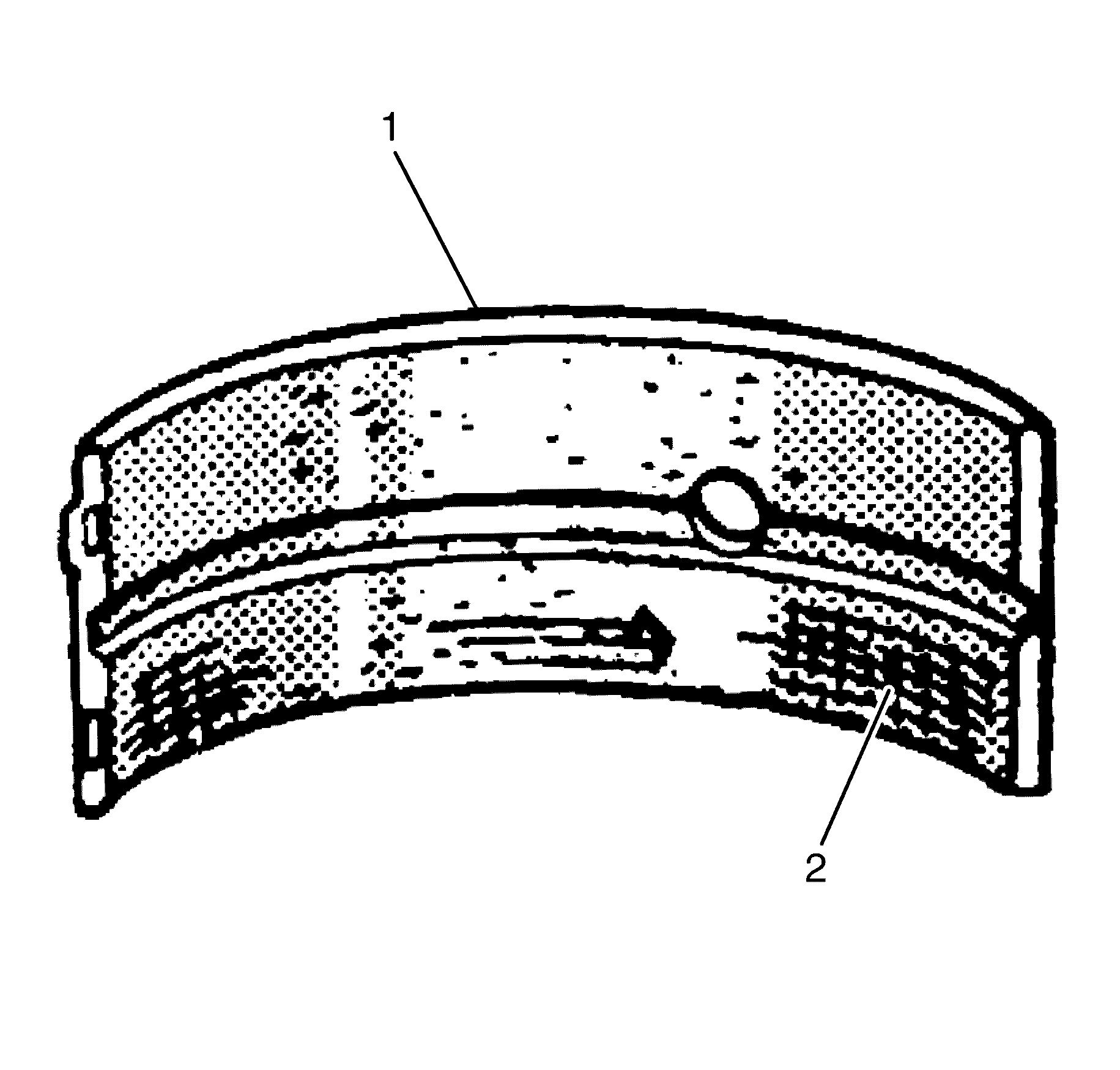
- Inspect for scoring above acceptable tolerances or discoloration (2)
on both front and back of the bearing halves (1).
- Inspect the main bearings for dirt embedded into the bearing material.

- Inspect for incorrect seating indicated by bright, polished sections (1).
Crankshaft Measurement
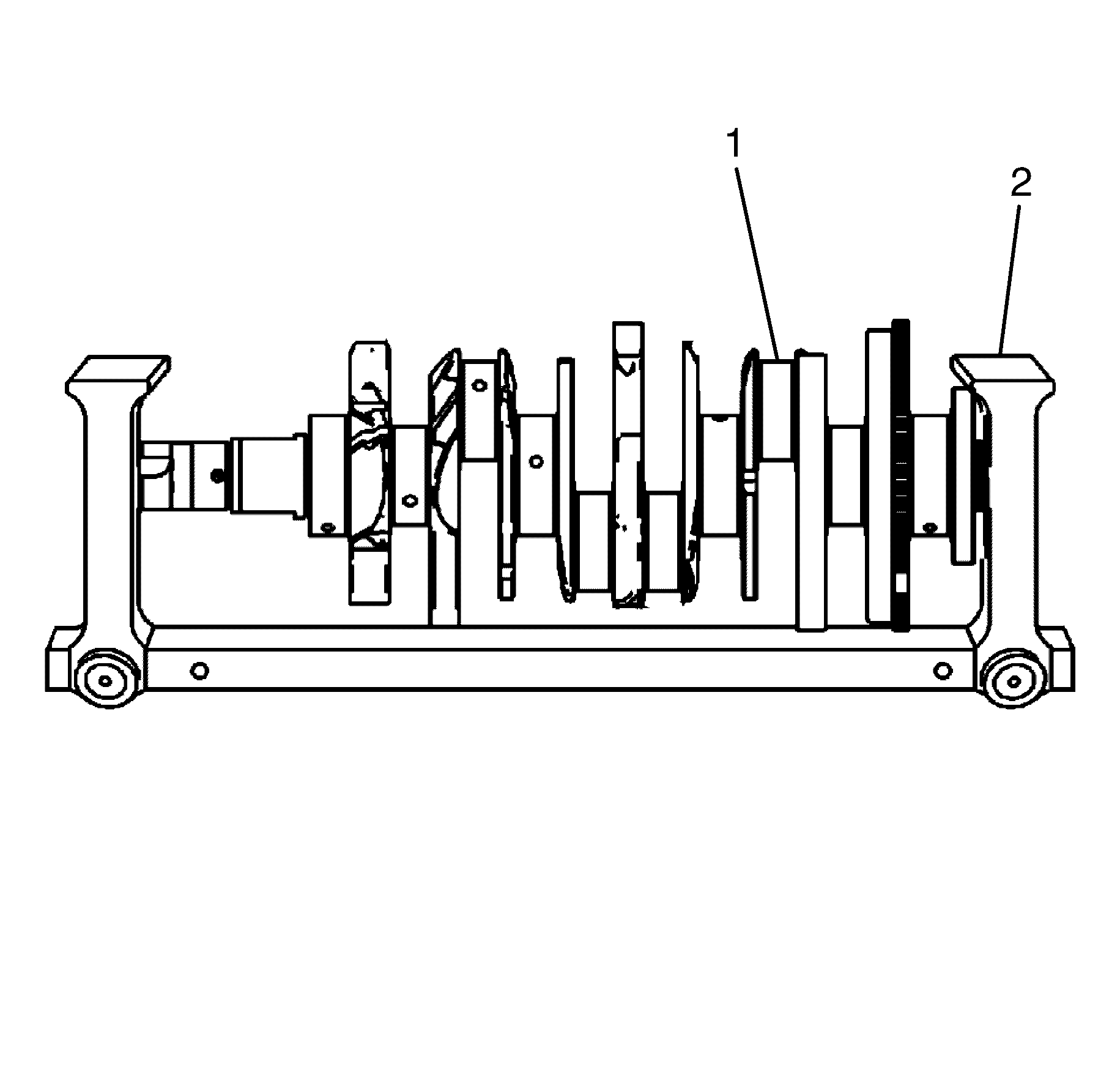
- Using a suitable fixture (2), support the crankshaft (1).

- Set up a dial indicator (3) and magnetic base (2).
- Rotate the crankshaft (1) to measure and record the crankshaft
runout. Compare your results with the
Engine Mechanical Specifications.
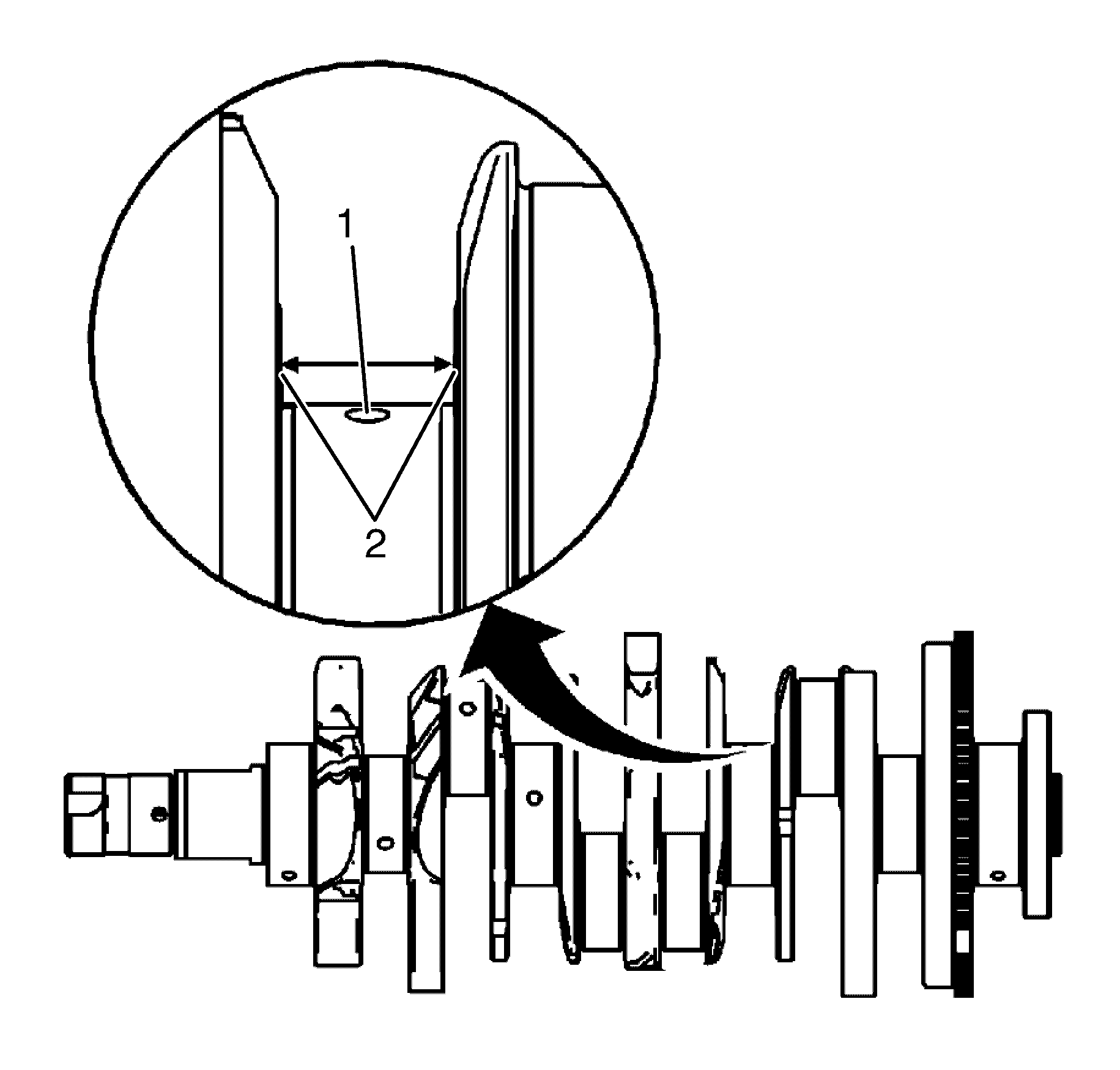
- Measure and record the crankshaft thrust wall width (2) for wear using
an inside micrometer. Compare your results with the
Engine Mechanical Specifications.
- Measure and record the crankshaft thrust wall surface (1) for runout
using the dial indicator. Compare your results with the
Engine Mechanical Specifications.
- If the crankshaft journals are damaged or worn beyond specifications,
the crankshaft may be ground 0.25 mm (0.010 in). There is only 1 size
of oversized main bearings available for service.
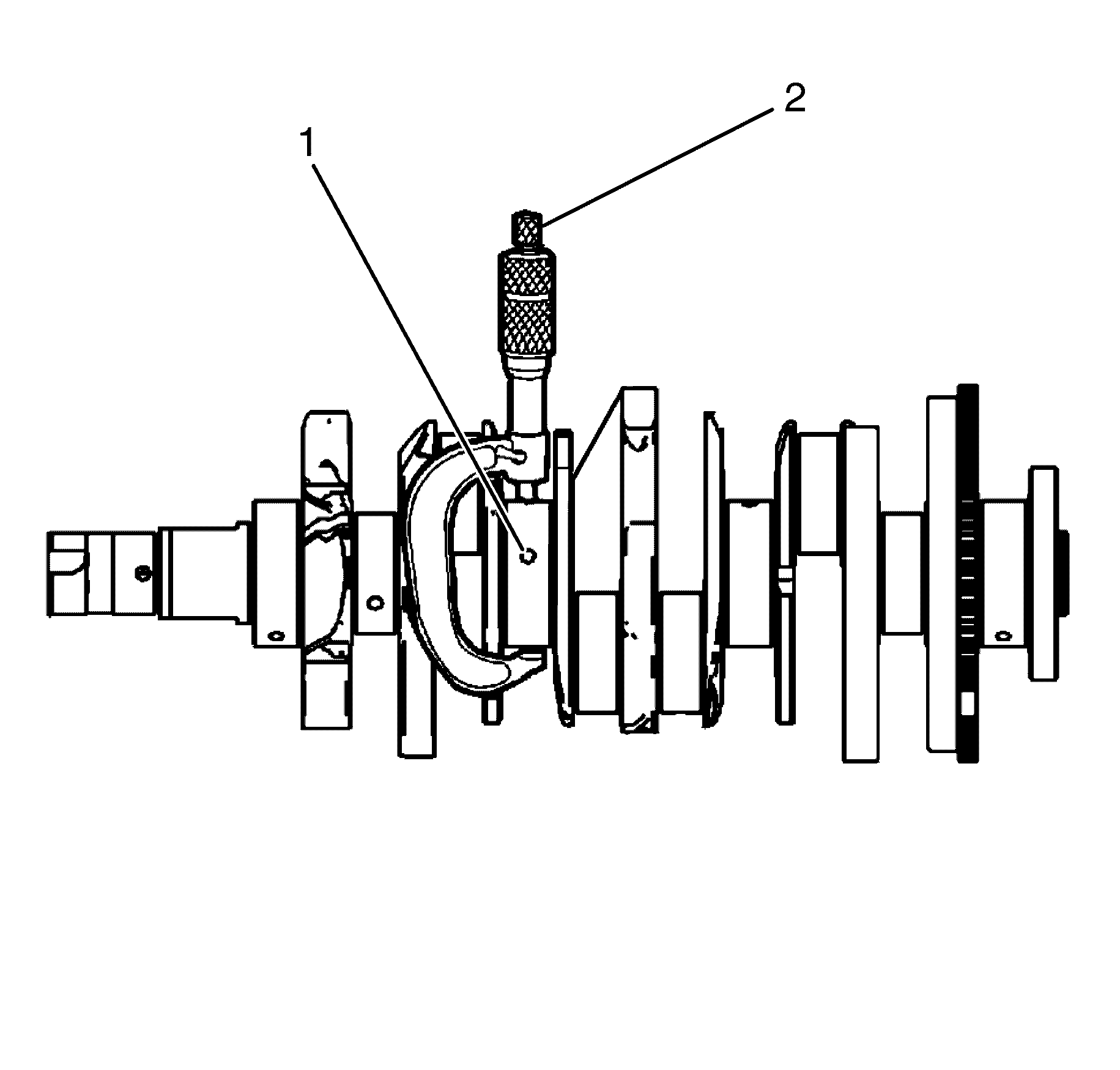
- Inspect the crankshaft main journals (1) for undersize, using an outside
micrometer (2).

- Inspect the crankpins (1) for undersize using an outside micrometer (2).
- Compare your results with the
Engine Mechanical Specifications. If the crankpin
journals are worn beyond the specifications, the crankshaft may be ground 0.25 mm
(0.010 in). There is only 1 size of oversized connecting rod bearings
available for service.
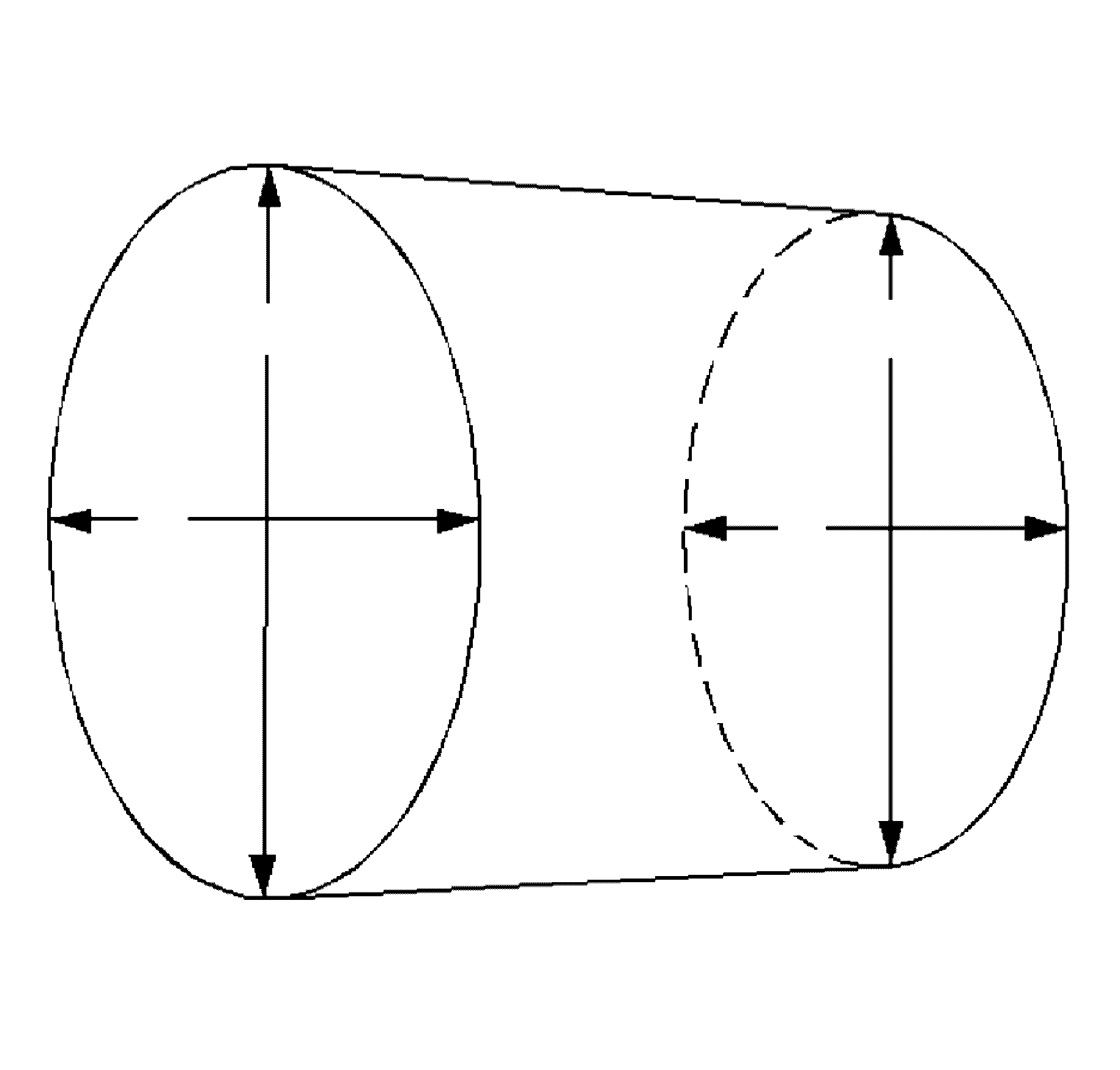
- Measure the main bearing and crankpin journals for out-of-round using the following
procedure:
| 10.1. | Using an outside micrometer, measure the journal at the extreme front
and rear locations on the journal. Call these points A and B. |
| 10.2. | Measure the journal in 2 new locations exactly 90 degrees
from the first points. Call these points C and D. |
| 10.3. | Subtract A from C and B from D. The differences will indicate journal
out-of-round. |
| 10.4. | The out-of-round should not exceed 0.004 mm (0.00016 in)
maximum. |
| 10.5. | If the journals are worn beyond the specifications, the crankshaft may
be ground 0.25 mm (0.010 in). There is only 1 size of oversized
crankshaft and connecting rod bearings available for service. |
- Measure the main bearing and crankpin journals for taper using the following
procedure:
| 11.1. | Using an outside micrometer, measure the journal at the extreme front (A)
and rear (B) of the journal parallel to the crankshaft centerline. |
| 11.2. | Subtract the smallest from the largest measurement. The result will be
the journal taper. |
| 11.3. | If the main bearing journal taper exceeds 0.004 mm (0.00016 in),
replace the crankshaft. |
| 11.4. | If the journals are worn beyond the specifications, the crankshaft may
be ground 0.25 mm (0.010 in). There is only 1 size of oversized
crankshaft and connecting rod bearings available for service. |










